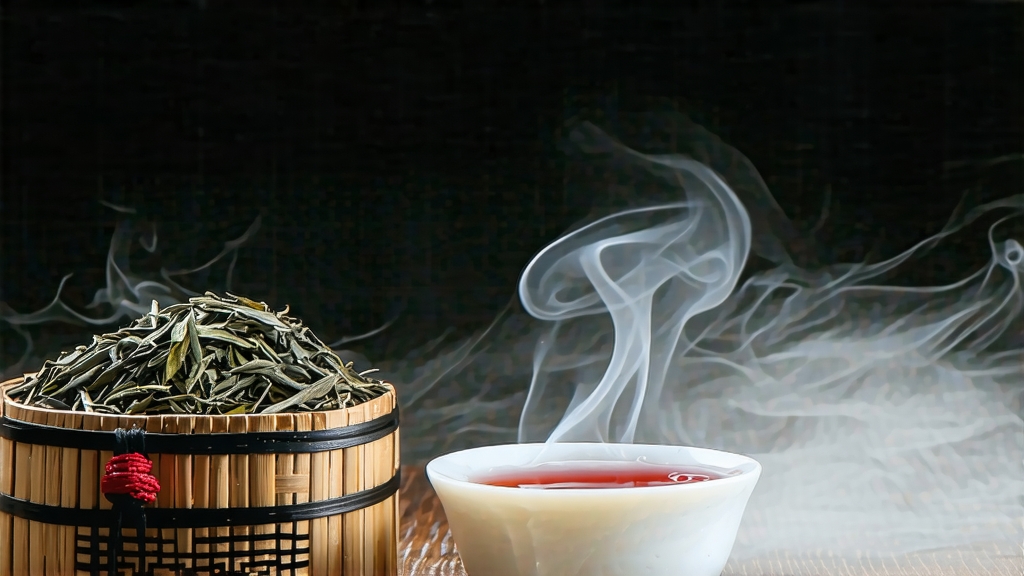
Long before Assam, Ceylon, or Earl Grey entered the global lexicon, the first fully oxidised leaf that the world would come to call “black tea” was born in the rugged Wuyi Mountains of northern Fujian. Locals named it Zheng Shan Xiao Zhong—“Small Leaf from the Original Mountain”—but the trading houses of Xiamen and later London phoneticised the Fujianese pronunciation into the now-legendary label Lapsang Souchong. In the pantheon of Chinese hong cha (red tea), Lapsang Souchong is simultaneously the progenitor and the outlier: the style that launched an international craze, yet the only one whose authentic version is still cured over smouldering pine embers, carrying the scent of a forest campfire into every cup.
Historical records kept by the Jian’ou county gazetteer place the innovation of fully oxidised leaf in the late Ming dynasty, around 1568, when a passing army requisitioned the tea workers’ drying sheds. To meet the next day’s market deadline, farmers rushed the leaf over open pinewood fires, inadvertently creating a sweet, resinous aroma that delighted Dutch buyers at the port of Batavia. By 1604 the first chests reached Europe; Catherine of Braganza’s marriage to Charles II in 1662 sealed the fashion for this “bohea” tea in the English court, and the Boston Tea Party of 1773 further enshrined it in Atlantic history. Thus, every sip of Lapsang Souchong is a time capsule of globalisation’s earliest stirrings.
True Zheng Shan Xiao Zhong is geographically protected: only leaf plucked within the 60 km² core of the Wuyi National Nature Reserve may bear the name. The reserve’s altitude (600–1 200 m), subtropical humidity, and mineral-rich laterite soils nurture the indigenous Xiao Ye Zhong (Small Leaf Variety) tea bushes, whose leaves are markedly smaller and thicker than those of the modern Da Bai Hao clones used for Fujian’s newer golden teas. Spring picking begins when the mountain azaleas bloom; two leaves and a bud are snapped before 10 a.m., while dew still beads the surface, ensuring slow enzymatic oxidation.
Crafting Lapsang Souchong is a choreography of fire, wind, and human touch that unfolds in a 24-hour cycle. After a brief withering on bamboo racks set high above pine-fired troughs, the leaf is rolled under cloth on wooden boards, bruising the cell walls just enough to liberate polyphenols for oxidation. Unlike other black teas that oxidise in humid rooms, here the leaf is spread into pine-wood “qing long” (green baskets) and lowered into a shallow pit where embers of local Masson pine glow at 80 °C. The smoke is not an afterthought; it is the kiln’s atmosphere, perfuming the leaf for six to eight hours while moisture drops from 65 % to 18 %. A final charcoal bake at 60 °C for two hours fixes the smoky sweetness and coaxes notes of longan, lychee, and dried raisin beneath the resinous top layer. The result is a strip-style leaf, glossy ebony with tawny tips, weighing 30 % less than when it was plucked yet infinitely more complex.
Western palates often meet a counterfeit first—crude, bitter leaves doused in artificial smoke oil marketed as “Russian Caravan.” Authentic Lapsang Souchong is subtle: the smoke is a halo, not a hammer. Dry leaf aroma offers pine sap, dried plum, and a whisper of sandalwood. The liquor, steeped 4 g per 120 ml, glows amber-red like a Xing kiln cup held to candlelight. First infusions deliver honeyed sweetness, a touch of cinnamon, and the cooling camphor note found in old-growth fir. By the third infusion the smoke recedes, revealing a malt core reminiscent of digestive biscuit, while the fifth lingers with cocoa and rose-hip acidity. Good leaf yields eight infusions before surrendering, a stamina that belies its delicate fragrance.
To brew Lapsang Souchong gongfu style, heat spring water to 95 °C; anything hotter scalds the resin and turns the cup acrid. Rinse the gaiwan or Yixing pot with boiling water, then fill one-third with